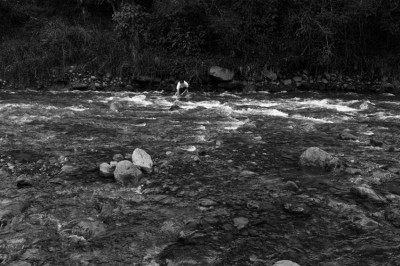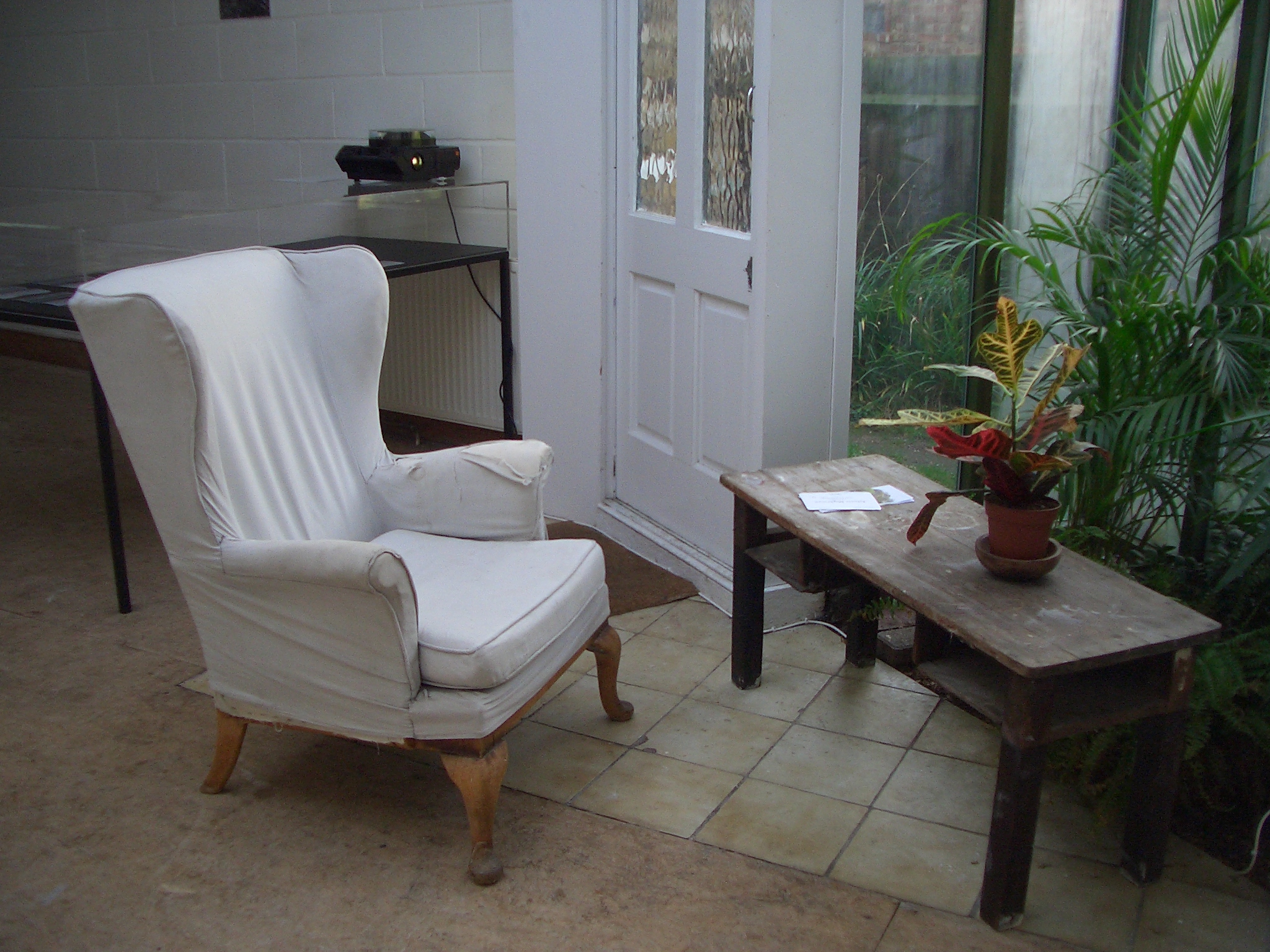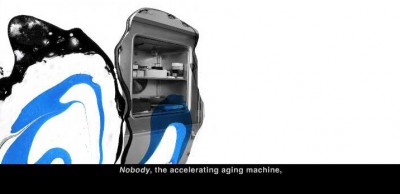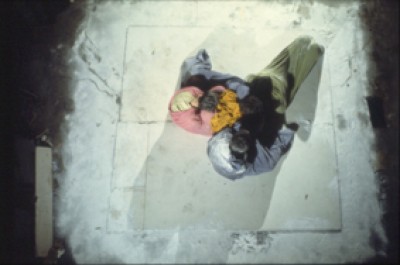THE PRESENT MOMENT/THE WHOLE EVENT: PART TWO
5 November–22 November 2009
Works on the time-base spectrum by Jose Arnaud-Bello, Juliette Blightman, Mariana Castillo Deball, John Latham, Carlyle Reedy, and Barbara Steveni

Juliette Blightman Untitled (2009) Mixed media
PART TWO*
The Present Moment/The Whole Event continues with a group exhibition of work by Jose Arnaud-Bello, Juliette Blightman, Mariana Castillo Deball, John Latham, Carlyle Reedy, and Barbara Steveni.
Parts One and Two of the exhibition have taken one of John Latham's roller paintings as a backdrop and framework. The rollers, or blind paintings, made between 1963-67, were an attempt by the artist to physically embody time in painting.
"Latham adopted the roller format because it enabled him to represent time as a passing effect and time as a state which does not change, to encapsulate the relationship between the present moment and a whole event (a life or a universe): if the rectangle of canvas represents a whole event, then the narrow strip of canvas exposed along the roller represents the present moment. When the canvas is rolled up, the whole event is still there but hidden from view."
(John A. Walker, 'John Latham, The Incidental Person', Middlesex University Press, 1994)
In 1972 Latham made the Time-Base Roller (now in the Tate Collection), three lengths of canvas along a 6m long cylinder. This time he included a numbered spectrum along the horizontal axis of the Roller, with a 'least event' represented at Band 1 on the left hand edge, and the universe as event at Band 36 on the right. Between these two extremes, the spectrum allows for the understanding of all cosmological, geological or spiritual phenomena, all physical, emotional or psychological states within the same system.
All of the works in this group exhibition deal with time and event, they are all accommodated on the time-base spectrum of the Roller in their relation of different types of time, from least event to cosmos. Time as a measure of lived experience - clock time, routine, and time passing. Time on an evolutionary or geological scale - it's advancement imperceptible to any living thing. The psychological shifts in time permitted by histories, memory and fiction and the parapsychological leaps permitted by the spiritual and religious.
* In the prologue to his two-part essay 'A New Refutation of Time' (published in 1947) Jorge Luis Borges explains the structure of his text.
"The first article (A) was written in 1944 and appeared in number 115 of the review Sur; the second, of 1946, is a reworking of the first. Deliberately I did not make the two into one, understanding that the reading of two analogous texts might facilitate the comprehension of an indocile subject."

Jose Arnaud-Bello One Moment and Several Stories (2008) Photographic series (detail). Image courtesy the artist.

Jose Arnaud-Bello One Moment and Several Stories (2008) Photographic series (detail). Image courtesy the artist.
Arnaud-Bello made a series of works in the Pance river, near to Cali in Colombia. This shallow section of the river is a popular weekend destination, visitors regularly move stones and rocks to make pools or provisional seating areas. The series of photographs in the vitrine record Arnaud-Bello's action of removing of various rocks from the river bed, based on their idiosyncrasy in relation to their surrounding environment, taking them home, photographing them - capturing them out of time? - and then returning them to their exact original location on the river bed, which has already moved on and transformed completely. In Modelando el cauce, the minute changes in the placement of a small rock between two larger rocks makes a relatively huge difference to the water's flow.

Throughout Part One of the exhibition, Blightman posted daily letters, notes or objects to John Latham's house. The letters relate Blightman's days in the UK and Berlin during this time, incorporating memories, mementos and traces. The artist has borrowed furniture from Flat Time House which visitors can use to read the letters. One letter is added to the pile each day of Part Two of the exhibition.

Mariana Castillo Deball Nobody Was Tomorrow (2007) DVD 15'42" Image courtesy the artist.
Nobody Was Tomorrow adopts the magical realist style of Borges to tell the story of an accelerating aging machine in the restoration department of the National Library of Belgrade, a fig tree growing through the floors and foundations of a modernist building, and the remains of a Roman baths close by in the city. The central image of the film is a charred book, aged 250 years by the above mentioned machine, and displayed in pride of place in the library's main reading room. The machine, used to 'extrapolate time', sends the book simultaneously into its past and its future.

Carlyle Reedy Human Visual Sculpture in Contemplative Time (1972) Slide documentation of performance. Images courtesy the artist.
This work was originally made in 1972 for a performance at the Royal Court Theatre in London. The slides were made by the artist, choreographing the performers and photographing their movements from the upper storey of a church. The figures, wearing cocoon-like fabric bags, moved around a large square painted onto the floor. During the subsequent stage performance, the performers slowly emerged from these bags wearing undyed linen and the slides were projected onto their bodies, they then worked in "interaction with the slide imagery of their previous selves".
Barbara Steveni, Makings and Siftings, 2009. Performance and mixed media assemblage.
Barbara Steveni was the instigator of the Artist Placement Group in 1966. She negotiated placements within industry and government departments for artists including Latham, David Hall, Barry Flanagan, Ian Breakwell and Stuart Brisley. For her recent project I am an archive she has led a number of performance walks, revisiting sites of importance in the development of APG. In her new studio work she is making and sifting from objects and artefacts collected over decades. The makings and siftings consist of temporary assemblages made by Steveni and recorded on camera and microphone. Throughout the exhibition, whilst Steveni is in her studio, there will be a live relay of her performance sculpture to a monitor in the house.
